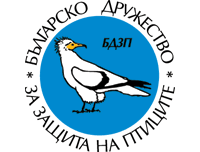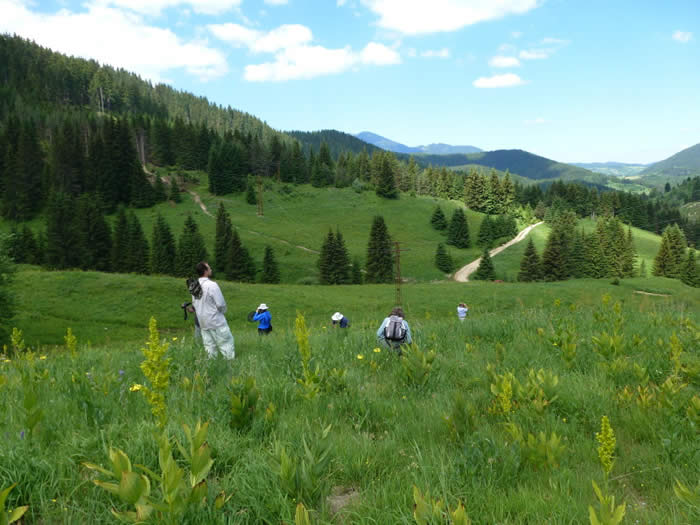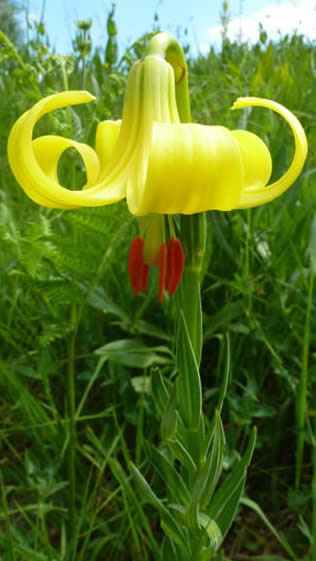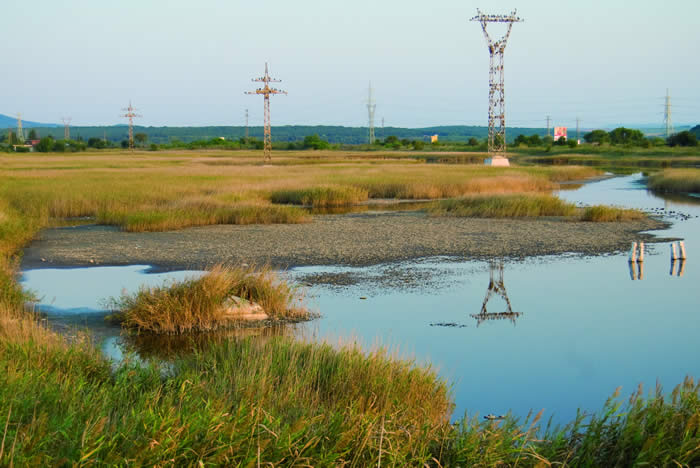Bulgaria, the Western Rhodopes
June, various years
Bulgaria conservation project - protecting Rhodope lilies
The Rhodope lily Lilium rhodopaeum is a very scarce flower of the Western Rhodopes. It’s found on just a handful of sites in Bulgaria and just over the border in Greece, about half of which have no official protection. Our local leader, Vladimir Trifinov (Vlado), is the Bulgarian authority on this spectacular endemic, and with our help leads on its monitoring and conservation.
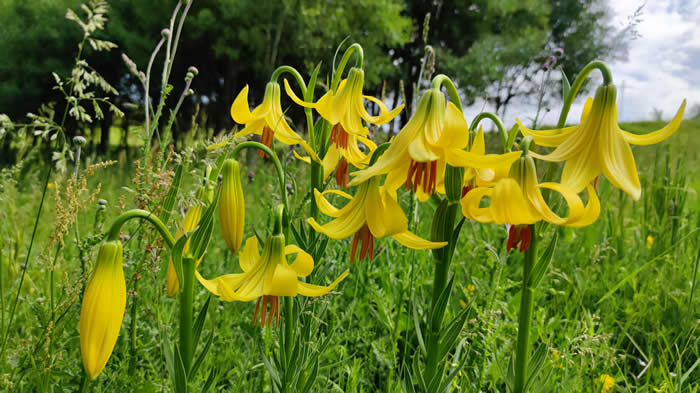
Lilium rhodopaeum, 2021 (Vladimir Trifonov).
2025: there were 160 flowering lilies this year, which is many more than there were ten years ago, but quite a dip from last year’s record count of 596. Numbers do vary from year to year, though Vlado says that a lack of grazing and mowing has led to too much competing bracken and false helleborine. There are plans to tackle this under-management of the meadow before next year’s growing season. Vlado's report is here.
2024: lilies looking good when visited by this year's Honeyguide group. Holiday report, June-July 2024 and Facebook, June-July 2024. The Honeyguide Wildlife Charitable Trust sent £450 to Vlado, raised by this holiday, to cover the costs of monitoring and management of the Rhodope lilies here during 2023 and 2024.
2023-24 - an increase of 175% Vlado's reports for 2023 and 2024 are combined here. There was a small dip in numbers in 2023 and an astonishing increase in 2024. The headline news from 2024 is 691 plants of which 596 were in flower - an increase of 175% from 2023 to 2024.
The report has a table of counts over 17 years from 2008 to 2024. There was an initial decline, and some ups and downs between years, but the main outcome in recent years is hugely encouraging. This is largely a recovery after a period of overgrazing. In coming years this may slow due to undergrazing - just a few deer - though time will tell. Wild boar root in the meadow, and Vlado believes that this is helpful, clearing grass and providing bare areas, probably essential if plants are to grow from seed, though for now vegetative growth seems to be driving the increase.

Rhodope lily meadow, 22 June 2024.
2022, lily numbers continue to grow: reporting best years for Rhodope lilies ever has become a happy routine, as local expert and Honeyguide leader Vladimir Trifonov in Bulgaria reports. Vlado describes yet another excellent season in his 2022 report. This year's numbers are: 613 individual plants, of which 356 were flowering and 257 vegetative, at the site regularly monitored by Vlado. Vlado says: "It is likely that the increasing number is due to a kind of momentum, after several consecutive years of grazing in the locality, in which competitors (bracken and false helleborine) were removed." There has been less grazing in the past two years, so a decline may be coming. In November 2022, Honeyguide sent a further £400 to covering monitoring costs for 2021 and 2022. Photos 2022 (on Facebook).
2021, another best year ever: the population of the rare Rhodope lily Lilium rhodopaeum, protected with the help of Honeyguide, continues to grow, says local expert and Honeyguide leader Vladimir Trifonov in Bulgaria. Vlado, as noted in his 2021 report — read it here — counted 355 individual plants at 'our' site, 267 of them are flowering and 68 vegetative. Those in flower were up from 262 in 2020, which was itself a record since monitoring started in 2008. Vlado's report was also published in the RHS Lilies & Related Plants journal, extract here. In January 2021, Honeyguide sent £400 to covering monitoring costs for two seasons, 2019 and 2020.
2020, another best year ever: Vlado's 2020 report says that the total number of the population continues to increase. In 2020, Vlado counted 213 individual flowers on 369 plants, up from 123 in 1999, which was itself a record year for the number of plants. So the population in 2020 was easily the biggest since detailed monitoring began in 2008. Grazing started in August, after the end of the flowering season, which is very favourable for the species.
2019, best year ever: Vlado reports that 2019 was the best year to date for Lilium rhodopeaum on the site he monitors and manages, with the biggest number in the population since monitoring began in 2008. Vlado found 194 plants, of which 132 were flowering. Read Vlado's report here and more photos from 2019 on Facebook here. 2019 was a year with no Honeyguide group visiting, though support continued with money raised in other years.
Donations in 2016 and 2018: money raised by Honeyguide groups, namely £420 in 2016 and £340 in 2018, went to support ongoing monitoring and management work for the Rhodope lily at the same site described below. Money raised in 2015 is held in reserve. There was no Honeyguide group in Bulgaria in 2017 or 2019.
The Rhodope lily in had a good year in 2018. The number of plants increased, management helped the plants, they were fenced at the right time, fruit capsules formed on the lily plants. Vlado's 2018 report here.
2016: a good year for Rhodope lily: Honeyguide's group in Bulgaria in June enjoyed a fine show of the threatened Rhodope lily Lilium rhodopaeum at our regular site. With 84 plants, 56 of them in flower, that's the best for several years, with none of last year's problems of plants being dug up. Some on-site management by Vlado Trifonov, Honeyguide leader and Lilium expert, seems to have helped - that was to counter undergrazing. Perhaps weather was a factor. Some plants were setting seed, too, which happens all too rarely. The lily features in our 2016 Bulgaria holiday report here.
Donations in 2014: we followed the pattern of 2012 (as detailed below) by splitting the donations between BSPB and Vlado Trifonov. For BSPB (£200), this will fund meetings with local stakeholders as BSPB continues to lobby to get Tzigansko Gradishte designated for nature conservation. For Vlado (£340) it will fund two years of monitoring and mowing at the location (we are still withholding the name) visited by Honeyguiders.
In 2012, the conservation contributions from our holiday raised £400 and we have doubled this to £800, using some unallocated funds in the Charitable Trust's account, raised by the Wildlife Outreach Network (more here). |
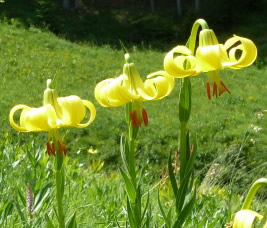 |
£500 was sent to The Bulgarian Society for the Protection of Birds, the BirdLife partner in Bulgaria, which also has a wider biodiversity remit. This supports BSPB in finalising the designation of Protected Area Tzigansko Gradishte - a Lilium rhodopaeum site - as part of the Natura 2000 network of internationally important wildlife sites. It will cover travel and communication costs for meeting and getting support from local people and authorities, and for the final public hearing.
£300 goes to Vladimir Trifonov. Vlado is the botanist who co-leads Honeyguide groups, and his job title is 'Chief Expert, Biodiversity and Protected Areas', for the Ministry of Environment and Waters, based at the Ministry's regional inspectorate in Haskovo. Vlado will be monitoring the privately-owned site - at a secret location that we won't name - where the 2012 group saw Lilium rhodopeaum. That will include clarifying ownership and, if possible, arranging management of the meadow.
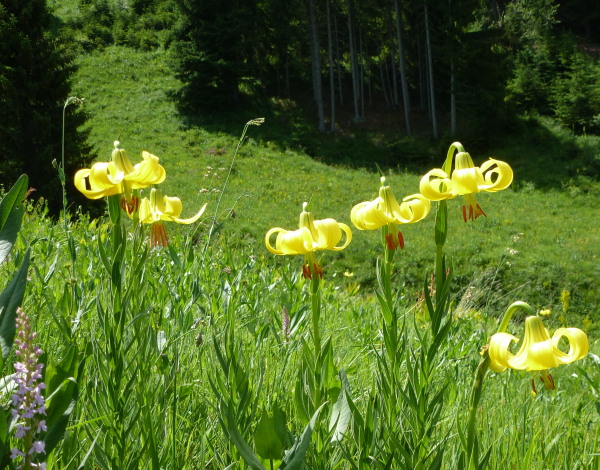
Lilium rhodopeaum, June 2012. There is also a fragrant orchid in the bottom left of the photo.
Return to main page for Bulgaria's Western Rhodopes.


